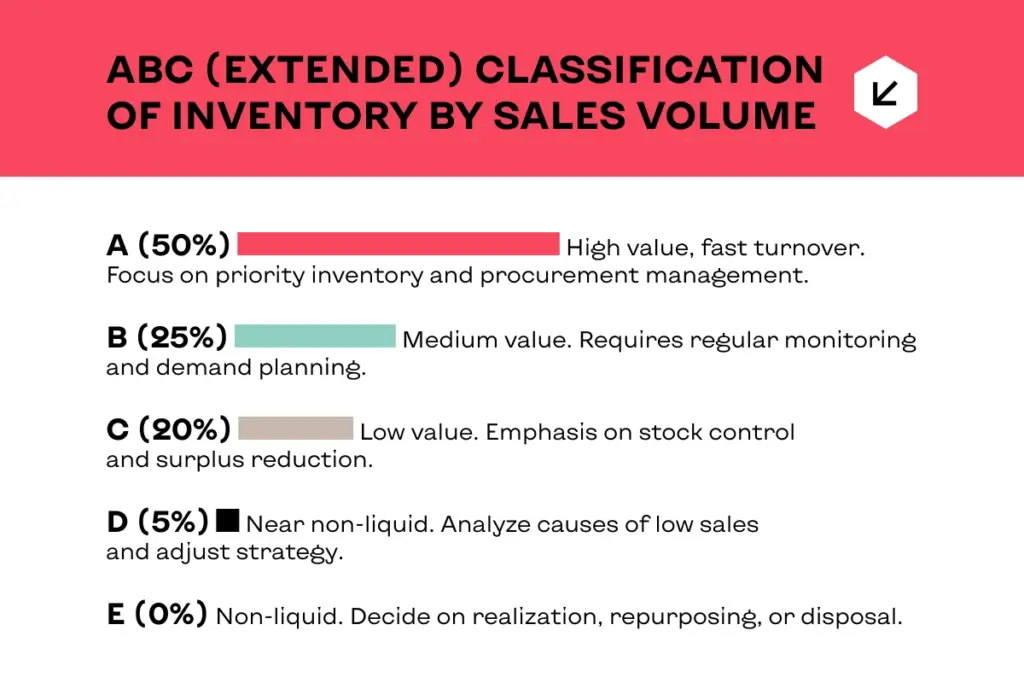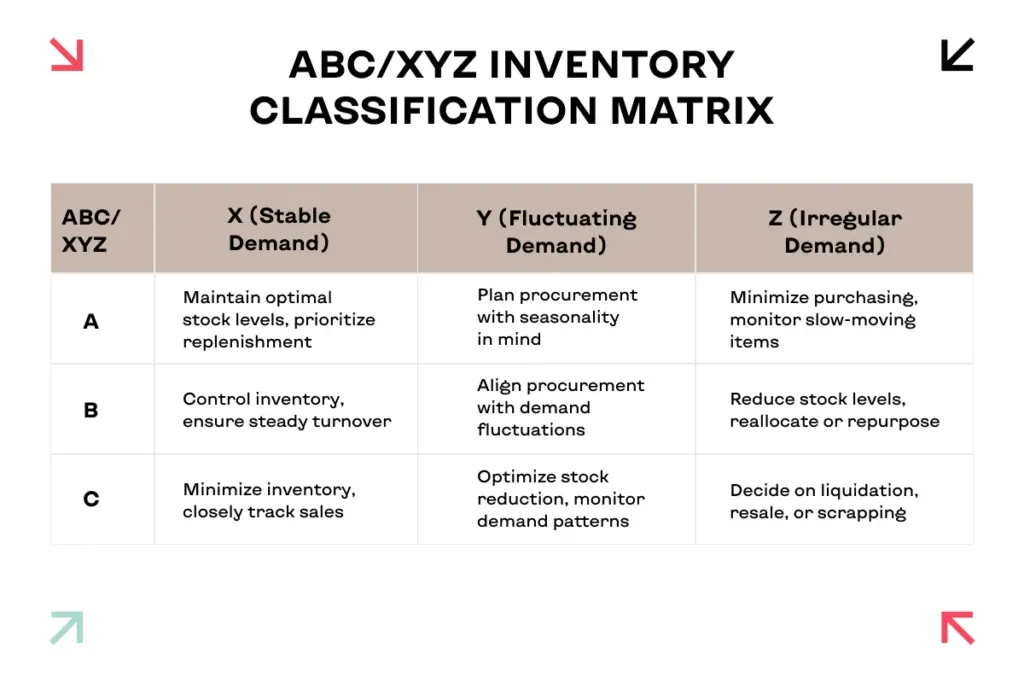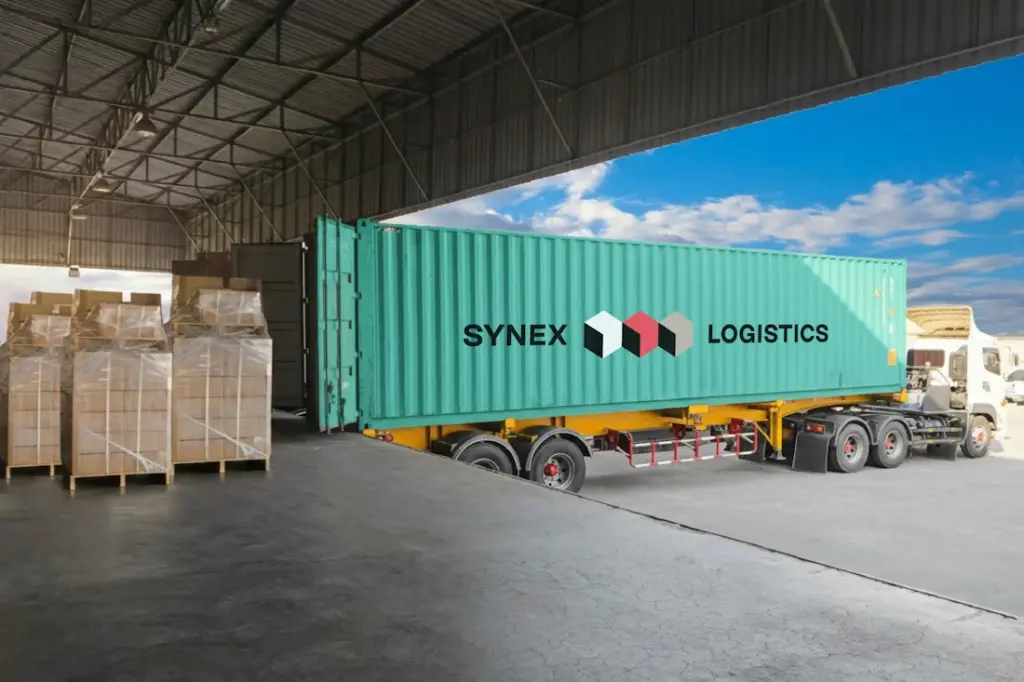Surplus and Obsolete Inventory: Principles of Effective Warehouse Stock Management

Excess and obsolete inventory is one of the most common challenges companies face: warehouses become overstocked while working capital remains frozen. This article explores the causes, financial implications, and practical tools for optimization. It is designed for business owners, supply chain managers, and logistics professionals seeking to improve warehouse efficiency.
Table of Contents:
- What Are Surplus and Obsolete Stocks?
- Business Impact of Surplus and Obsolete Inventory
- Principles of Effective Inventory Management
- Practical Methods for Managing Surplus and Obsolete Stock
- Key Focus Areas for Effective Warehouse Inventory Control
- Why SYNEX Logistics Is Your Trusted Inventory Management Partner
- Conclusion
What Are Surplus and Obsolete Stocks?
In warehouse logistics, surplus and obsolete inventory are critical indicators of stock management efficiency.
Surplus: goods whose quantity exceeds current demand.
Obsolete stock: items that remain unsold for an extended period and lose market relevance.
Monitoring these indicators allows companies to optimize stock levels and maintain stable product turnover.
Root Causes of Surplus
Surplus inventory typically results from inaccurate planning and insufficient control of on-hand balances and stock movements. Key drivers include:
- Demand-forecasting errors;
- Ineffective inventory control;
- Overestimation of requirements;
- Seasonal demand swings.
Primary Drivers of Obsolescence
Obsolescence occurs when surplus remains in storage long enough to lose market relevance. Companies may procure items that later find no demand or build excess volumes by overestimating internal needs. Seasonality is decisive: products unsold within their commercial window quickly migrate to obsolete stock.
Business Impact of Surplus and Obsolete Inventory
A warehouse filled with unsellable goods works against the company: every additional pallet increases operating costs and reduces overall warehouse efficiency.
Financial Losses and Frozen Capital
Idle goods transform a warehouse into a “non-productive vault.” Company funds remain tied up in non-moving inventory, and if financed by credit, costs may increase by up to 70%. Instead of being reinvested in growth or in-demand products, capital is diverted to storage and maintenance.
Decline in Warehouse Efficiency
The accumulation of unsold goods on shelves slows down material flows and complicates inventory control, negatively affecting warehouse operations. Processing times and error risks during order picking increase, while staff are forced to spend more resources on stock management. In many cases, companies are compelled to expand storage space, which drives up costs for rental, equipment, and maintenance. As a result, logistics loses both speed and flexibility, and customer service levels inevitably decline.
Principles of Effective Inventory Management
A well-structured approach to inventory management reduces surplus and obsolete stock, accelerates capital turnover, and ensures more streamlined warehouse operations. Modern practices rely on data-driven analysis, regular monitoring of stock levels, and the use of automation technologies. Together, these measures help maintain an effective balance between supply and demand.
ABC and XYZ Analysis
ABC and XYZ analyses are core tools of inventory management that enable companies to systematically identify obsolete stock by classifying products based on value and demand stability.
ABC analysis, derived from Pareto’s principle (approximately 20% of items generate 80% of turnover), segments products by turnover value: categories A, B, and C represent descending levels of importance, while categories D and E indicate obsolete or non-performing stock.

XYZ analysis makes it possible to assess the stability of demand for individual products and the predictability of their consumption. While ABC analysis shows which items are the most valuable in terms of turnover, XYZ analysis highlights the demand stability of each specific SKU.
XYZ analysis classifies products into three categories: X — stable, highly predictable demand; Y — moderately fluctuating demand, often influenced by seasonality or external market factors; Z — irregular demand with a high risk of obsolescence
Combined, ABC/XYZ analysis enables accurate forecasting, resource allocation, and strategic support, leading to better overall inventory management:

This integrated approach enhances resource allocation, improves purchasing accuracy, and ensures faster response to market dynamics.
Regular Stock Audits
Stock monitoring shows which items are currently in stock and helps identify slow-moving products. During an inventory audit, staff checks quantities, expiry dates, and packaging integrity against system records. These insights support procurement adjustments, stock reallocation, and sales planning, helping to avoid frozen capital. Such systematic control minimizes errors in order fulfillment, reduces financial losses, and ensures warehouse logistics remain efficient and well-managed.
Inventory Management Automation
Leading companies are increasingly adopting warehouse automation systems integrated with IoT, enabling real-time visibility of inventory, more accurate demand forecasting, and data-driven stock management. Automation reduces manual intervention, accelerates order processing, lowers error risks, and supports the timely identification of surplus and obsolete stock. By leveraging these technologies, inventory management becomes more transparent, precise, and cost-effective.
Practical Methods for Managing Surplus and Obsolete Stock
Effective management of surplus and obsolete inventory requires practical methods for processing and optimizing these assets. Companies use various approaches to minimize financial losses, accelerate inventory turnover, and improve warehouse logistics.
Inventory Liquidation and Safe Disposal
One of the primary methods of managing surplus stock is sales realization through clearance campaigns, promotional discounts, or resale to business partners at reduced prices. Products that have completely lost market value or expired must be safely disposed of in accordance with legal and environmental requirements. This approach not only enables partial recovery of invested capital but also helps avoid unnecessary storage costs for unsellable goods, while ensuring compliance with both legal and environmental standards.
Repurposing or Recycling
In some cases, products can be repurposed or reprocessed, giving them a new form or function. For example, outdated items may be used as components, bundled into kits or gift sets, or recycled into raw materials for other products. This approach helps reduce losses, decrease existing obsolete stock, and maximize the use of already acquired resources — effectively turning potential dead stock into added value.
Outsourcing and 3PL Solutions
Companies often engage third-party logistics operators and leverage Contract Logistics to manage their inventory. These partners take responsibility for storage and transportation, and, when required, also support product distribution. This alleviates capacity constraints in the main warehouse, optimizes logistics costs, and accelerates capital turnover. As a result, businesses gain greater flexibility in inventory management, reduce the risk of stock obsolescence, and can concentrate on core products and strategic operations.

Key Focus Areas for Effective Warehouse Inventory Control
Warehouse inventory control ensures transparency, accountability, and timely stock management. The following areas are essential for building an efficient system:
- Structure and Classification. Includes classification of warehouses and goods by category, expiry dates, and turnover type, along with clear labeling to accelerate search and reduce picking errors.
- Real-Time Data Updates. Requires accurate recording of receipts, transfers, and shipments. Integration with WMS/ERP systems ensures data consistency and full inventory visibility.
- Performance Monitoring and KPIs. Covers minimum/maximum stock levels, turnover rates, expiry dates, and the share of surplus and obsolete stock. These indicators enable timely purchasing adjustments and effective stock reallocation.
- Inventory Counts and Audits. Regular cycle counts and audits maintain data accuracy, strengthen compliance, and mitigate financial risks.
- Operational Transparency. Well-documented Standard Operating Procedures (SOP) help staff work efficiently, minimize errors, and maintain consistency across warehouse operations.
Why SYNEX Logistics Is Your Trusted Inventory Management Partner
SYNEX Logistics, as a trusted 3PL provider, helps companies optimize warehouse processes, maintain control over inventory, and reduce surplus and obsolete stock through advanced WMS, TMS, and IoT-driven solutions. Within our Contract Logistics framework, we design tailored strategies, including seamless ERP integration and leveraging Multimodal Transport solutions to ensure timely goods movement. This approach delivers operational transparency, accurate inventory control, and reliable demand forecasting. Our proven expertise in deploying professional inventory management tools supports faster capital turnover and makes warehouse logistics more streamlined and well-coordinated.
Partnering with SYNEX Logistics enables you to streamline warehouse operations, accelerate inventory turnover, and minimize financial losses. Contact us today to implement professional, data-driven inventory management solutions.
Conclusion
Effective inventory management enables companies to avoid surplus and obsolete inventory, safeguard working capital, and reduce storage costs. The use of analytical tools, regular audits, and process automation helps maintain the balance between supply and demand. Businesses that adopt a structured approach to warehouse management achieve greater resilience and agility in their logistics operations — directly enhancing profitability and strengthening their competitive position in the market.




